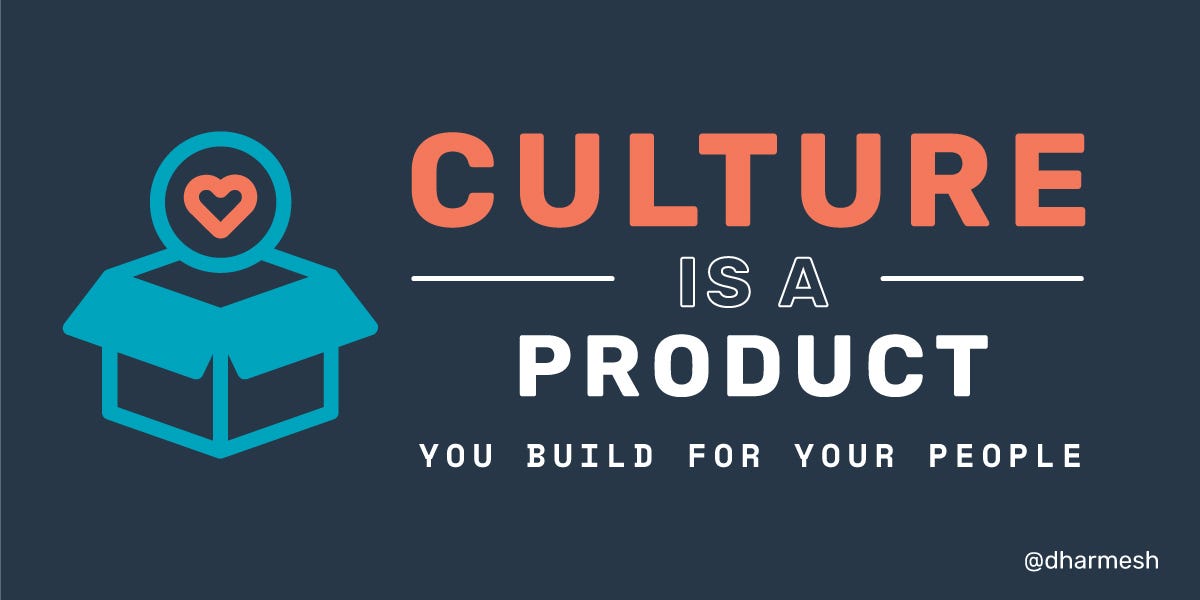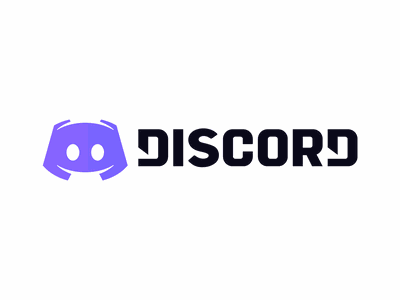Official post from OnStartups


Join our discord server for more intellect discussions “Big Brains”.
Follow my blog “Big Brains”, if you like the content I post.
Said differently, your people/employees are the customers of your culture, which you can think of as a product.
So, every company actually has two products: The one they offer their customers, and the other they offer to their people/employees.
To explain the thinking here, let’s enumerate some of the ways culture is a product and tips for applying the metaphor to craft more effective cultures that support growth and scale.
- Customer Feedback / Culture Feedback. Just like you would never build a product without talking to customers, you wouldn’t try and craft a culture without talking to your people, and understanding what their needs are.
- Product Is Never Done / Culture Is Never Done. Just like a product is never “done”, culture is never “done”. You have to keep iterating. Too many startups make the mistake of thinking their goal is to “preserve” their startup culture as they grow and scale. That shouldn’t be the goal. The goal should be to evolve the culture/product over time so it continues to meet the needs of the employees/customers. Yes, there are some of your core values you want to hang on to, and you want to keep your startup “spirit”, but as you grow, a few things will likely need to be tweaked.
- Example: In the early days of HubSpot, nobody had job titles. We thought they were a waste of time. Nobody cared, and we thought they were a waste of time. As we grew, we came to accept that job titles are useful and though the founders may not care, other people do (understandably) care, because there is life after HubSpot (or so we’ve heard).
- Measure/Analyze Product / Measure/Analyze Culture. Just like you would measure and analyze how a product is doing — based on feedback from customers, you should measure and analyze how your culture is doing, based on feedback from your employees.
- Example: At HubSpot, every quarter for many years, we do an eNPS survey (employee Net Promoter Score) that has two questions: On a scale of 0–10, how likely are you recommend HubSpot as a place to work? Why did you provide that score? We then go through *all* the survey responses, and categorize the “bug reports and feature requests”. We then report back to the team as to what the patterns were, and what we’re doing about them. Some are “Yep, that’s a bug — here’s how we’re going to fix it.” Others are: “Yeah, we know some people don’t like that — but it works as designed. Sorry.”
- Clear Product Omissions / Clear Culture Omissions. Just like it’s important to not just decide what your product going to do, but also what it is not going to do, it’s important to decide what your culture is intentionally omitting.
- Product Use Cases / Culture Use Cases. Just like it’s important to understand what the purpose of your product is — what’s the “Job To Be Done”, it’s important to understand what job your culture is trying to do. Usually, it’s to help people make better decisions, better serve customers and facilitate long-term growth — but it’s entirely possible your culture needs to serve other use cases.
- Product Feature Pruning / Culture Feature Pruning. Just like it’s occasionally necessary to prune features from your product, it’s also necessary to sometimes prune features from your culture. This could be because adoption is low or the value that “feature” is providing isn’t high enough to warrant its carrying cost (and every feature of a product or culture has a carrying cost).
- Technology Debt / Culture Debt. Just like you sometimes take on technology debt in order to get a product out the door (“I know this code is a bit messy and slow, but I can live with it, because the deadline is important — we’ll come back and refactor it later.”), you will also take on “culture debt”. The most common reason for culture debt is you’ve been desperately trying to hire for a given role, you’ve finally found someone that has the experience and skills you need — but they’re kind of an arrogant jerk. You hire them anyway. So you’ve just taken on some culture debt. The thing to remember is that culture debt is much more insidious than technology debt. With technology debt, you can cycle back and refactor/rewrite that messy code and hence pay off the debt. With culture debt, like in our example of hiring a “non-fit” person, you can later let that person go, but that doesn’t completely pay off the debt. Having that person on the team has planted some toxicity in your company that’s much harder to weed out.
- Product Design / Culture Design. We spend time designing our products so that they’re easy to use and easy for customers to do the thing they’re trying to do. No matter how powerful features matters if the product is so hard, nobody uses those features. Similarly, with culture, you have to design it and manifest it in ways that it’s easy for employees to use the culture.
- Shipping Product / Shipping Culture. We all know that no matter how brilliant a product is, it doesn’t create much value if it never ships and customers never get their hands on it. Similarly, your culture needs to have a manifestation of some sort. You have to “release” it. That doesn’t mean you need a deck with 128 slides, like HubSpot has. It also doesn’t mean you have to release it to the whole world on the Internet. But you do have to get the culture out of the founders’/leaders heads and into some set of artifacts that are usable by employees. This need to ship is particularly important as a company scales and not everyone is one degree removed from the founders.
- Product Rewrites / Culture Rewrites. This doesn’t always happen — but it does happen. Sometimes a product winds up so far off track that the best choice is to scrap it and start over. It’s one of those “last resort” type decisions — but there are cases when that’s the right decision. For a product, it happens when the product is just not serving the needs of customers and a simple iteration or two is not going to fix it. With culture, this happens if things are just so toxic and dysfunctional that leadership has to rethink it. It’s a painful realization — but when it happens, it’s often very clear (and also very public — as we’ve seen with some spectacular culture pivots in some high-flying scaleups before).
Remember: Culture debt has a higher interest rate and is more difficult to pay down. Tread carefully. - Examples: Does your culture doc help people make hiring decisions? Does it help determine who should be rewarded/promoted and who should be released? Does it make easy decisions unnecessary (because it’s 100% clear to everyone what the “right” decision is), and does it make hard decisions somewhat easier, by at least setting up some guard rails and constraints?
I’ll stop there. There are likely more dots to be connected on why culture is a product — but I’ll leave that to you. Would love to hear what ideas you have in the comments.
Meanwhile, do yourself and your startup a favor and be more intentional about culture in your early years. If I could do HubSpot all over again, one thing I would do differently is that I’d have thought about culture, and made investments in culture sooner.